Upavista Konasana (Seated Angle Pose)
Benefits
|
This pose is designed to stimulate the abdominal muscles, lengthen the spine and the backs of the legs, release tight groin muscles and quiet the brain. Upavista Konasana is helpful with backache. It can help correct knee problems that come from imbalances in leg muscles, and it can help alleviate mental agitation. |
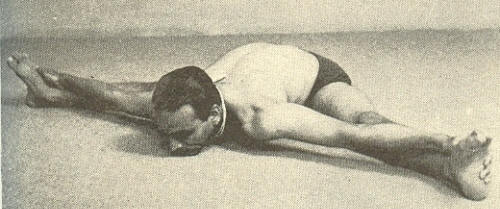 |
First Stage
|
Start by sitting in Dandasana, then take legs wide apart (keeping the heels on the sticky mat if possible). Then lift your hips up and move your pelvis forward to widen the angle between the legs. Use your hands to take the backs of thighs out and then press the inner thighs down. Place cup-shaped hands next to the hips, with fingertips pointing forward. Point knees and toes up. Press fronts of thighs, knees, shins, and heels down. Take the shoulders and elbows back and lift sides of chest and front of chest up. Press the thighs, hips, knees, shins and heels, and hands down and lift the sides of ribs and chest up. Extend outward through the inner heel and the ball of the foot and press the outer thighs in against the thighbones and pull the outer hips in. |
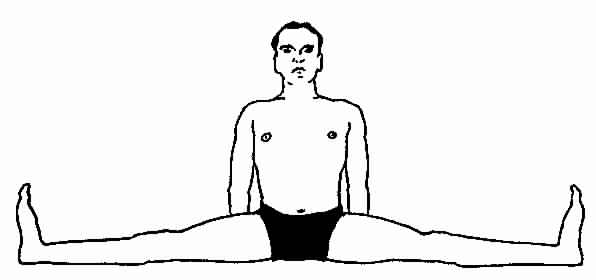 |
Second Stage
|
Ground your thighs and begin to walk your hands forward in between the legs while lifting the chest. Like other forward bends, you want to bend at the hips and not at the waist. To do this, roll your front thigh outwards and ground the back of your thighs. Keep the tops of buttocks moving down and your back ribs moving inward and upward to help you keep the chest lifting as you slowly walk your hands forward with a concave back. |
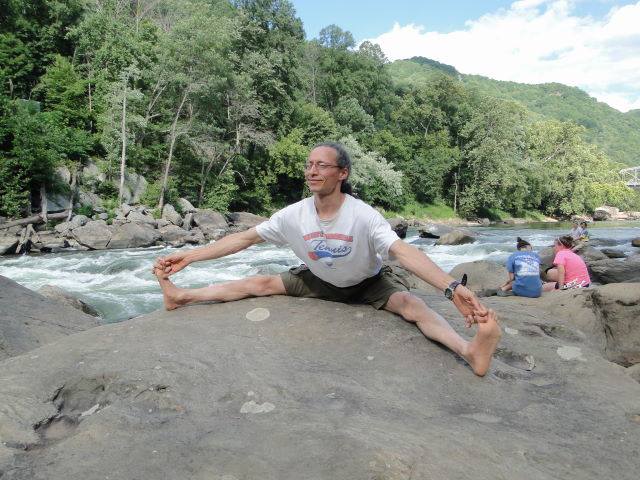 |
Third Stage
|
Grasp your big toes with your index and middle finger on the inside of the big toe and the thumb on the outside. If you are not able to reach your big toes with your back concave and chest lifted put straps around the balls of the feet. Use the leverage of grasping your toes and bending your elbows up and out to the side to pull your torso forward and rest your head on the ground or on a blanket or block for support. Anchor your buttocks, outer hips, thighs and knees as you extend the bottom ribs and chest forward. Keep your knees and toes pointing upwards as you bend forward. With each inhalation extend the spine forward and with each exhalation release the trunk and head toward the floor and relax your shoulders away from your ears. Relax your abdomen and observe the space within the abdomen that is created by the arm and leg actions. Let that space be contiguous with the space at the back of your throat (so the throat should not be tense), and behind the eyes. Let the stillness and openness of the spaces (akasha) foster mental calmness and inwardness (pratyahara). |
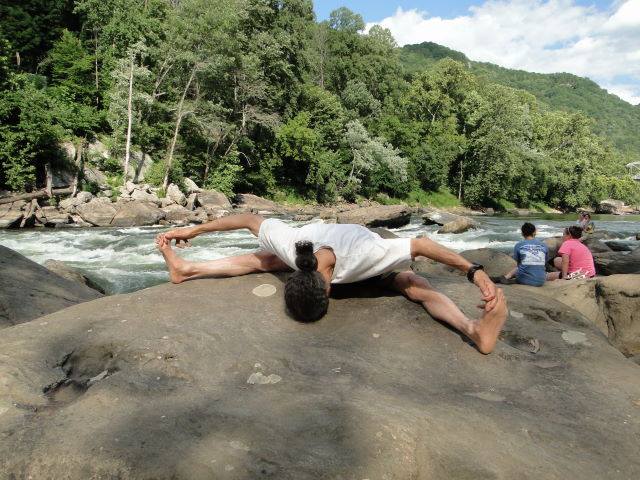 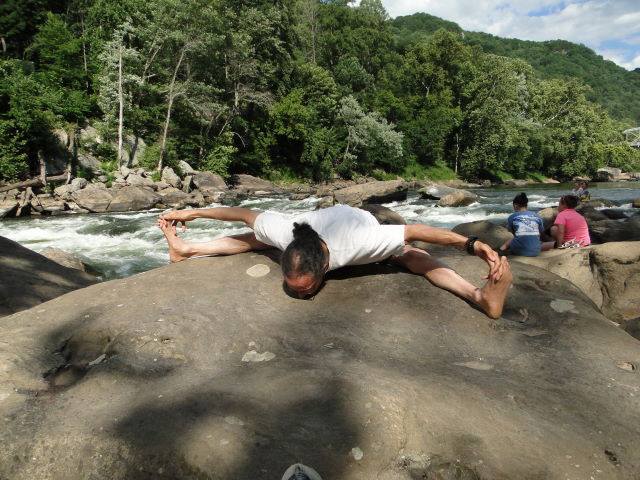 |
Practice Notes
1) Extend the legs and press them down without gripping the quadriceps to get the best elongation in the hamstrings
2) In the final stage when you lift your elbows, be careful not to let the top of chest collapse
3) Do not take your legs too wide apart, as this will overstretch the inner groins and make the lumbar spine collapse
4) Keep the outer hips in as you bend forward to prevent overstretching the hamstring muscles.
Contraindications and Cautions
It is best to consult a qualified teacher if you have any kind of injury before trying this or any other pose. If bending forward creates discomfort in your back, then sit up on a blanket and practice only Stage 1 – Utthita Upavista Konasana – with the back straight. If the groins are stiff, keep the legs closer together at a comfortable distance apart and only bend forward as far is comfortable. Those with stiff hamstrings can benefit from this pose by sitting up on several blankets or a bolster and using blocks under the hands. Prior injuries such as groin or hamstring pulls can also benefit from Upavista Konasana, but require modifications best learned from a qualified teacher. If there is pain in the pose, you have either bent too far forward, taken the legs too far apart, or not been able to perform the necessary actions to achieve an integrated stretch. It is better to back off and only bend forward as far as you can stretch comfortably.


